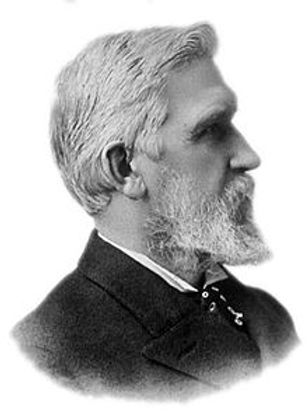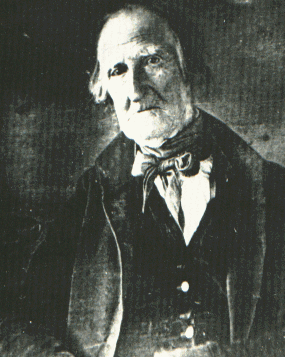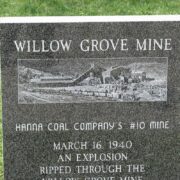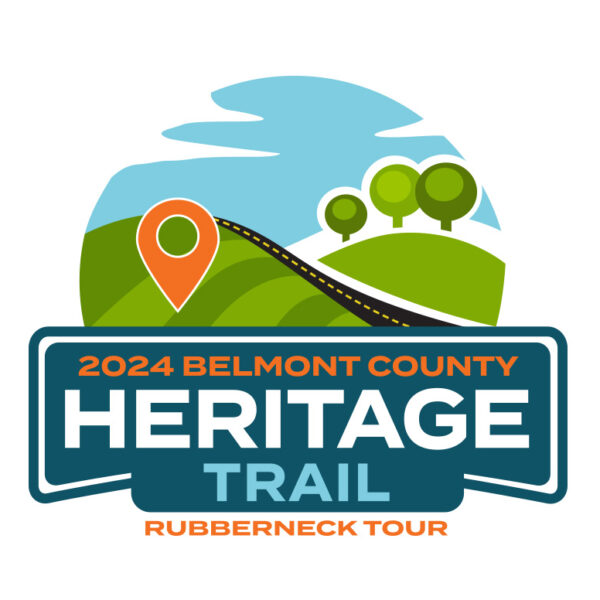
People You Should Know
Many notable people have called Belmont County home, either having been born here or lived here later in life. While many people who made their name in sports, literature and acting have Belmont County ties, this blog focuses on eight lesser known people of historical significance, and the county museums where you can find out more about them. For more famous Belmont County natives, also read: Authors, Actors, and Athletes.
1. Elisha Gray – inventor
Born in Barnesville in 1835, Gray is believed by many to have invented the telephone before Alexander Graham Bell. Gray co-founded the Western Electric Manufacturing Company. He is best known for the development of a telephone prototype in 1876, but also is considered to be the father of the modern music synthesizer and was granted over 70 patents for his inventions. A display on Gray and his inventions can be found at the Watt Center for History and the Arts in Barnesville.

2. Betty Zane- Revolutionary War Heroine
Elizabeth “Betty” Zane McLaughlin Clark (July 19, 1765 – August 23, 1823) was a heroine of the Revolutionary War on the American frontier. She was the daughter of William Andrew Zane and Nancy Ann (née Nolan) Zane, and the sister of Ebenezer Zane, Silas Zane, Jonathan Zane, Isaac Zane and Andrew Zane. On September 11, 1782, the Zane family was under siege in Fort Henry by Native American allies of the British. . During the siege, while Betty was loading a Kentucky rifle, her father was wounded and fell from the top of the fort right in front of her. The captain of the fort said, “We have lost two men, one Mr. Zane and another gentlemen, and we need black gunpowder.” Betty’s brother carelessly left gunpowder at their house. She ran 40 to 50 yards to retrieve gunpowder, then returned safely.
The Zane family later settled in what became Martins Ferry, Belmont County, Ohio, across the Ohio River from Wheeling, and played an important role during Ohio’s formative years.
You can see a statue of the young Betty Zane (erected with funds raised by school children in 1928) in Walnut Grove Cemetery in Martins Ferry, and learn more about her at the Belmont County Heritage Museum in St. Clairsville, and at the Sedgwick House Museum in Martins Ferry where items that belonged to the Zane family can be seen. Open by appointment by calling John Applegarth at 740-633-2648. Info on all three places can be found on this website.

3. Governor Wilson Shannon – first native born governor of Ohio
Born February 24, 1802, Wilson Shannon was a Democratic politician from Ohio and Kansas. He served as the 14th and 16th Governor of Ohio, and was the first governor of Ohio born in the state. Shannon was the second governor of the Kansas Territory. Wilson Shannon’s elder brother, Thomas Shannon, served a partial term in the U.S. House of Representatives from 1826–1827. His oldest brother, George Shannon, was the youngest member of the Lewis and Clark Expedition. A historical marker about the Shannon family can be found in front of the Belmont County Victorian Mansion Museum in Barnesville. Information about him is also at the Belmont County Heritage Museum in St. Clairsville. See this website for more info.

Wilson Shannon was Ohio’s first native born governor.
4. Benjamin Lundy – anti-slavery leader
Born in 1789 to a Quaker family in New Jersey, Lundy later settled in St. Clairsville and in 1815 built up a profitable saddlery business along the highway west (that later became I-70). In 1815, he and five others organized an anti-slavery association, known as the Union Humane Society, which within a few months had a membership of more than 500. Prominent members included lawyer journalist Charles Hammond, James Wilson (grandfather of President Woodrow Wilson and Joseph Howells (father of William Dean Howells). Fellow Quaker Charles Osborne, who edited the Philanthropist, also showed him journalism and printing basics. Information about Lundy can be found at the Underground Railroad Museum in Flushing, and the Belmont County Heritage Museum in St. Clairsville which is just up the street from the Benjamin Lundy House (not open to the public) at 164 E. Main Street. The building is on the National Register of historic places and there is a plaque on the front of it.

Abolitionist Benjamin Lundy helped form the Union Humane Society while living in St. Clairsville.
5. Josiah Fox – ship builder
Born in Great Britain, Quaker Josiah Fox, known as the Father of U.S. Navy, settled later in life in Colerain, Ohio. He is buried in the adjoining cemetery at the Concord Quaker Meetinghouse, the first Quaker Meeting in the Northwest Territory. He helped design the SS Constitution (“Old Ironsides”) and her sister ships the United States, Constellation, Congress, and President. The U.S. Navy placed a bronze plaque listing the ships he designed on his grave in 1976. You can also find a portrait of him and other information at the Belmont County Heritage Museum in St. Clairsville.

6. Isaac Parker – “the hanging judge”
Isaac Charles Parker was an American politician and jurist. He served as a United States Representative from Missouri and was a United States District Court judge for the Western District of Arkansas. Parker became known as the “Hanging Judge” of the American Old West, although he sentenced very few people to death. Of the over 13,000 cases he tried, only 160 received the death sentence and only 79 of them were executed. Parker was the youngest son of Joseph Parker and his wife Jane Shannon, and the great-nephew of Ohio Governor Wilson Shannon. He was raised on the family farm near Barnesville, Ohio.
A new documentary, Indians, Outlaws, and The Hanging Judge was recently filmed by the University of Arkansas and will be premiered in September. In addition to a plaque about the Shannon family outside the Belmont County Victorian Mansion Museum, a portrait of Parker is hanging in the Belmont County Heritage Museum.

Isaac Parker, born in Barnesville, became a well known judge in the old west.
7. Kathy Crumbley – Belmont County Sheriff
Kathy Crumbley, elected Belmont County Sheriff in 1976, was America’s first female to win a sheriff’s race while having competition in the primary and general elections. She appeared on the “Johnny Carson Show,” “Hee Haw” and the “Mike Douglas Show”. Paramount signed Crumbley as technical adviser for a proposed TV series based on her exploits. The tentative title was “Walking Broad”. There was even a song, “The Lady Sheriff of Belmont County” written and recorded about her. You can learn more about Crumbley, the history of sheriffs in Belmont County, and the history of the area at the Belmont County Heritage Museum in St. Clairsville.

8. May Louise Hinton-Wykle -pioneering African American nurse
May Hinton Wykle (PhD, RN, FAAN, FGSA) is an American nurse, gerontologist, educator, researcher, and the first African-American Marvin E. and Ruth Durr Denekas Endowed Chair at the Frances Payne Bolton School of Nursing of Case Western Reserve University. In 2011 she was inducted into the Sigma Theta Tau International Nurse Researcher Hall of Fame. Her honors and accolades are too numerous to mention here.
She was born February 11, 1934 in Martins Ferry, Ohio and graduated from Mount Pleasant High School. She earned her nursing diploma in 1956 at the Ruth Brant School of Nursing in Martins Ferry, where she was the school’s first African-American student.
After graduating, Wykle worked as a staff nurse at the Cleveland Psychiatric Institute. There, she gained experience as a head nurse and later, a supervisor. In 1962, she pursued her bachelor’s degree in nursing, then returned to the Cleveland Psychiatric Institute as an instructor and director of nursing education. In 1969, Wykle went back to Case Western Reserve University to earn her master’s degree in psychiatric nursing and her PhD in nursing, where her teachers were so impressed with her, they asked her to join the faculty. She has been a faculty member there since. During her career as nurse and educator, May Wykle made it her mission to open up the field of nursing to more minorities.
She is part of a new display about the Ruth Brant School of Nursing at the Belmont County Heritage Museum in St. Clairsville.

Born in Martins Ferry and the first African-American graduate of the Ruth Bryant Maguire School of Nursing, May Hinton Wykle is one of the leading researchers in the study of aging and a leader in creating educational opportunities for minorities.





